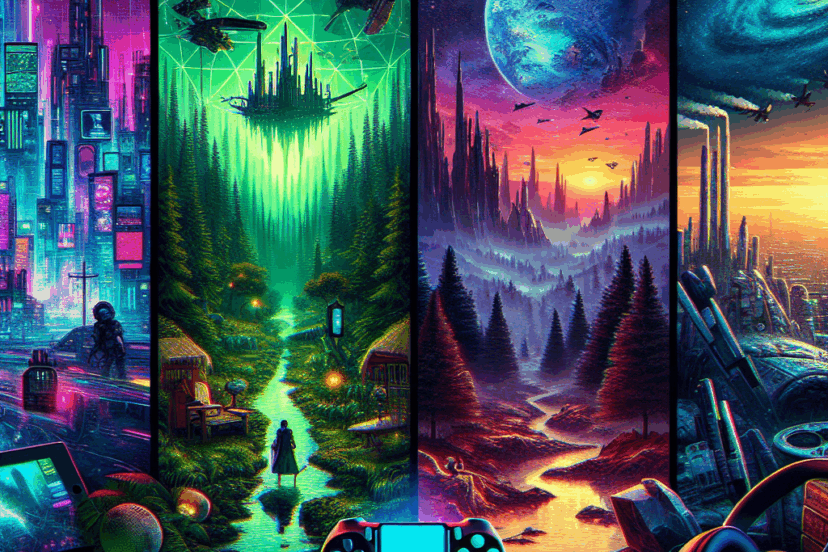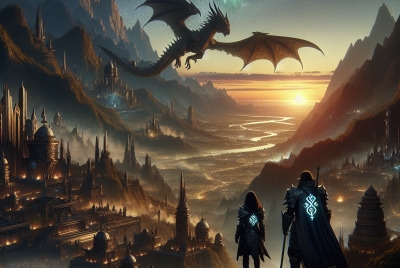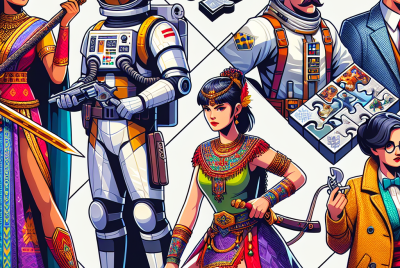Female Representation in Gaming: Progress and Challenges
The Historical Landscape of Female Representation in Gaming
The journey of female representation in the gaming industry has evolved significantly since the inception of video games. In the early days of gaming, female characters were often relegated to roles that were stereotypical, underdeveloped, or purely decorative. Iconic characters such as Princess Peach in the “Super Mario” series encapsulated the trend; often portrayed as the damsel in distress, she needed rescue rather than agency or empowerment.
During the 1990s, characters like Lara Croft from the “Tomb Raider” series began to change the narrative. While her portrayal was initially framed around a hyper-sexualized aesthetic, she represented a shift towards more complex female protagonists. The character’s popularity set a precedent and opened doors for other strong female leads in gaming, demonstrating significant potential for women in the medium.
The Rise of Strong Female Protagonists
As the gaming industry grew, so did the recognition of the need for diverse, relatable characters. Titles such as “The Last of Us” and “Horizon Zero Dawn” showcased powerful female figures, Ellie and Aloy, who were characterized by rich backstories, resilience, and depth. These characters resonated with audiences not just as symbols of empowerment, but as fully realized individuals.
The recognition of female gamers has also played a crucial role in this evolution. The fact that women make up nearly half of gamers today has pushed developers to prioritize representation in their narratives. Independent games have particularly championed nuanced female characters, with titles such as “Celeste” and “Life is Strange” providing stories that explore mental health, personal growth, and the female experience.
Mainstream vs. Indie Gaming Continues to Challenge Norms
The mainstream gaming industry has made significant strides in representation, yet it remains trapped within certain limitations. Titles from major publishers often struggle to move past sexualized representations and ambiguous storytelling when it comes to female characters. This is where the independent gaming scene has shone brightly. Indie developers prioritize meaningful storytelling, often featuring multi-dimensional female leads and plotlines that address issues related to gender, identity, and representation.
For example, games like “Gris” and “Spiritfarer” prioritize artistic expression coupled with impactful narratives that highlight the female experience, emphasizing emotional depth rather than superficial aesthetics. By prioritizing inclusivity and variety, indie games have contributed significantly to redefining what female representation can look like in gaming.
Behind the Scenes: Women in Game Development
Representation doesn’t stop at character design; it also extends to the individuals who create these games. The gaming industry has historically been male-dominated, but more women are entering the field. As of recent reports, female representation within the gaming workforce has climbed to about 20%—a promising figure, yet indicative of the challenges that persist.
Women’s participation in game development can influence storytelling, character development, and overall gameplay mechanics. Developers such as Amy Hennig and Jade Raymond have made significant contributions to iconic franchises. Their experiences and perspectives bring nuanced understanding and authenticity to female characters, fostering a more varied gaming culture.
Despite the gains, challenges remain. Women in gaming often face sexism, harassment, and a lack of mentorship opportunities. The “gamergate” controversy underscored the toxic environment that can pervade the gaming community, leading to increased calls for accountability and safer spaces for women in gaming at every level.
Impact of Social Media and Communities
Social media has played a pivotal role in shaping conversations around female representation in gaming. Platforms like Twitter, Reddit, and TikTok have allowed players and developers to share their insights, experiences, and calls for change. This has cultivated a community that amplifies female voices, fostering discourse around representation and inclusivity.
Hashtags such as #WomenInGames and #GameDevWomen have served as rallying points for individuals to share their experiences—both good and bad—while advocating for a more inclusive environment. Numerous online communities work towards celebrating female gamers and developers, providing resources and support for women to enter and thrive in the industry.
The Future of Female Representation
Looking forward, the ongoing evolution of female representation in gaming continues to be a collaborative effort. Industry leaders, developers, and players must recognize the importance of credible representations. Pushing for diverse narratives, mentorship opportunities, and initiatives designed to understand the gaming landscape will ensure a more inclusive future.
There is a growing realization among developers that players crave characters they can relate to—characters that mirror the diversity of their own experiences. Initiatives promoting diverse teams in game development are gaining traction. The emphasis on intersectionality in storytelling leads to richer, more nuanced portrayals that resonate with audiences across demographics.
In response to consumer demand, many gaming companies are making commitments to diversify their game development teams. Increased collaborative efforts with female creatives and focus on thought-provoking narratives will only strengthen the gaming industry’s connection with a broad audience.
Conclusion
As the gaming industry continues to grow, female representation is poised for further transformation. Awareness, advocacy, and action are needed to maintain the momentum gained over the past decade. By amplifying diverse voices, challenging stereotypes, and fostering inclusive environments, the gaming community can ensure that female representation evolves constructively.
Final Thoughts
While significant progress has been made in depicting female characters, the journey toward comprehensive representation is ongoing. By embracing this challenge, players, developers, and gaming communities can build a more inclusive future where every gamer sees themselves reflected in the games they love.




